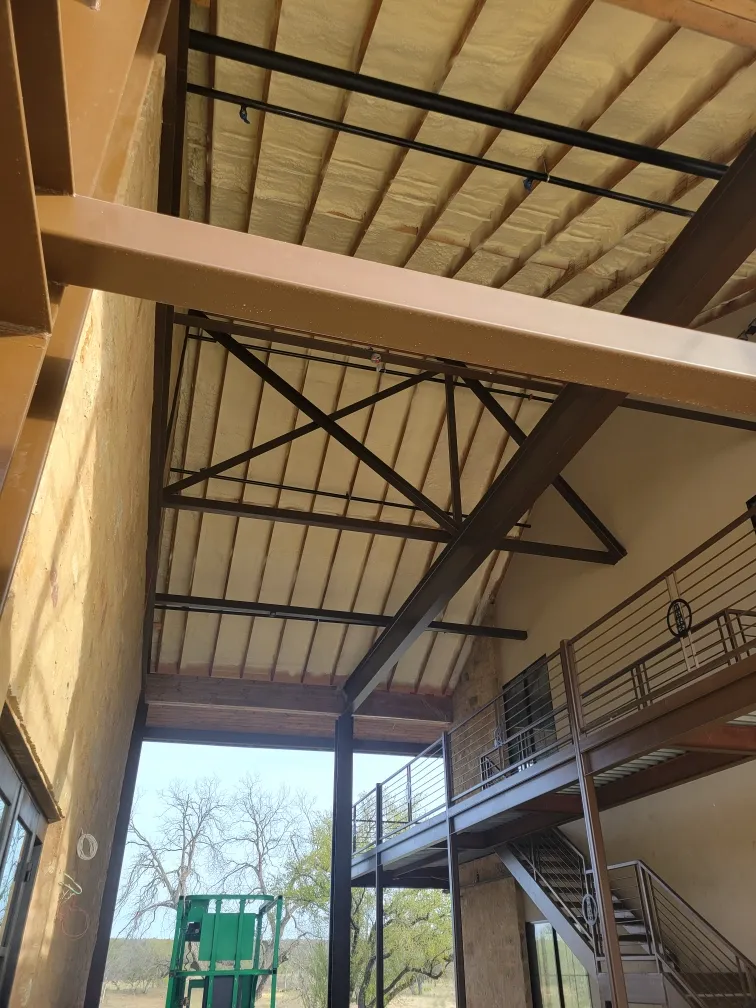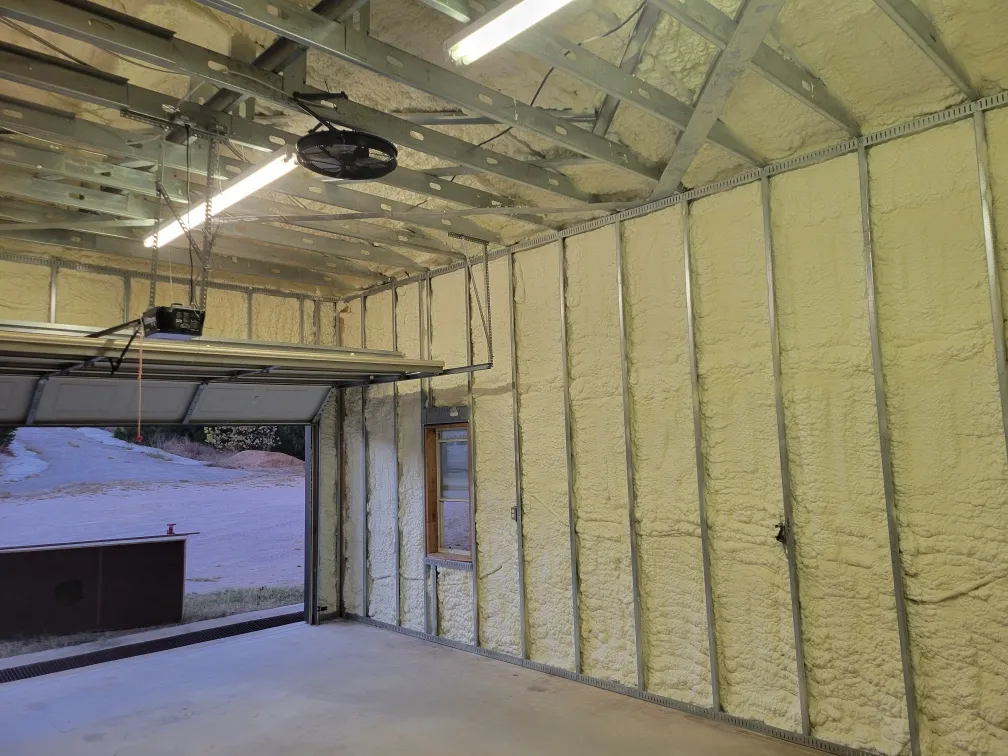
For homeowners in Waco, the best time of year to install spray foam insulation is during the fall and spring months. The moderate temperatures and lower humidity common during these seasons create the ideal conditions for the chemical reaction that forms the insulation. This allows the foam to cure properly, expand fully, and create a durable, effective air seal.
While fall and spring are optimal, a professional installation can be done successfully any time of year. The key is working with an experienced team that understands how to manage the challenges presented by Waco’s hot summers and occasional winter cold snaps. This guide explains how seasonality affects the installation process and what to expect, drawing from years of hands-on experience insulating homes across Central Texas.
The success of a spray foam application hinges on temperature and humidity control. The two chemical components of spray polyurethane foam (SPF) are mixed on-site and need specific conditions to react correctly. Ideal ambient and surface temperatures generally fall between 60°F and 80°F.
Waco’s weather in October, November, April, and May frequently fits this range perfectly. During these months, several factors work in favor of a smooth installation:
Summer is a popular time for home renovations, but the Texas heat presents specific challenges for spray foam. When temperatures climb into the 90s and beyond, and humidity is high, the installation process requires special adjustments. Without proper management, high heat can cause the foam to cure too quickly, a phenomenon known as “scorching,” which can compromise its structural integrity.
Experienced installers overcome these obstacles by:
Bonus Tip: If a summer installation is necessary, ensure the attic or workspace has good ventilation. Running fans for a day before the job can help lower the ambient temperature and reduce surface moisture on the decking.
While Waco winters are generally mild, cold snaps can bring temperatures below the ideal range for standard spray foam. Cold surfaces, particularly below 50°F, can slow the chemical reaction significantly. This can lead to poor adhesion, reduced yield (meaning the foam doesn’t expand as much as it should), and a weaker final product.
To guarantee a quality installation in Waco, technicians must take extra steps. This often involves using portable heaters to warm the substrate to the proper temperature before spraying begins. They also use specific “winter-grade” foam formulas that are engineered to perform better in colder conditions. A skilled applicator will always measure the surface temperature of the area to be sprayed, not just the air temperature, to ensure a lasting bond.
This table breaks down the pros and cons of installing spray foam during each of Waco’s distinct seasons.
| Season | Typical Waco Conditions | Pros for Installation | Cons for Installation | Professional Adjustments |
|---|---|---|---|---|
| Spring | Mild temps, moderate humidity | Ideal curing conditions, stable temperatures. | High pollen count may require extra site prep. | Minimal adjustments needed. |
| Summer | Hot temps, high humidity | Addresses immediate cooling needs. | Risk of foam curing too fast, moisture issues. | Use summer-grade foam, work in early AM. |
| Fall | Mild temps, low humidity | Optimal curing, dry surfaces. | Contractor schedules can be busy. | Minimal adjustments needed. |
| Winter | Cool to cold, variable humidity | Less demand may mean scheduling flexibility. | Cold surfaces can slow curing and reduce adhesion. | Use winter-grade foam, heat substrates. |
While the season is a key factor, a successful project also depends on the quality of your contractor and the specifics of your home.

Beyond the time of year, several other factors influence a successful spray foam insulation project.
Bonus Tip: Ask potential contractors how they monitor substrate temperature and moisture levels before and during the application. A professional will have digital tools to measure these conditions and will be able to explain the acceptable ranges.
Yes, it can. Excessive moisture can react with one of the primary chemicals in the foam, releasing a gas that creates bubbles and voids. This results in a weaker, less effective insulation layer with poor adhesion to the substrate.
Both open-cell and closed-cell foams are affected by temperature, but professional applicators use the correct formulation for the conditions. For example, closed-cell foam is often used on surfaces like metal buildings where its rigidity and vapor barrier properties are needed, and its application is highly sensitive to surface temperature.
For a typical residential attic, the process usually takes one to two days. This includes time for preparation (masking off areas to prevent overspray), the application itself, and cleanup.
Yes, it is recommended that homeowners, children, and pets vacate the premises during the spraying process and for a period of 24 hours afterward. This allows the foam to fully cure and any vapors to dissipate completely.
Most manufacturers specify that the surface to be sprayed should be above 40-50°F. The ideal ambient temperature for the best results is between 60°F and 80°F.
No. Applying spray foam to a damp or wet surface will prevent it from adhering properly and can trap moisture, potentially leading to mold, mildew, or rot. Any moisture problems must be fully resolved and the area thoroughly dried before installation.
Ultimately, while spring and fall present the most straightforward conditions for spray foam insulation in Waco, TX, a quality installation is achievable year-round. The most important factor is not the calendar, but the expertise of the installation crew. A team that understands the science of spray foam and is equipped to manage Texas weather can deliver excellent results in any season. Before moving forward, assess your home’s immediate needs, your project timeline, and your long-term efficiency goals.
The best way to determine the right approach for your property is to have it evaluated by an expert. A professional can assess your home’s specific conditions and explain how to achieve the best results, no matter the season. For a detailed consultation, contact Spray Foam Tech at (737) 777-9590 or send an email to oldworldtx@hotmail.com to discuss your project. An experienced technician can provide a plan tailored to your home and the current Waco weather.